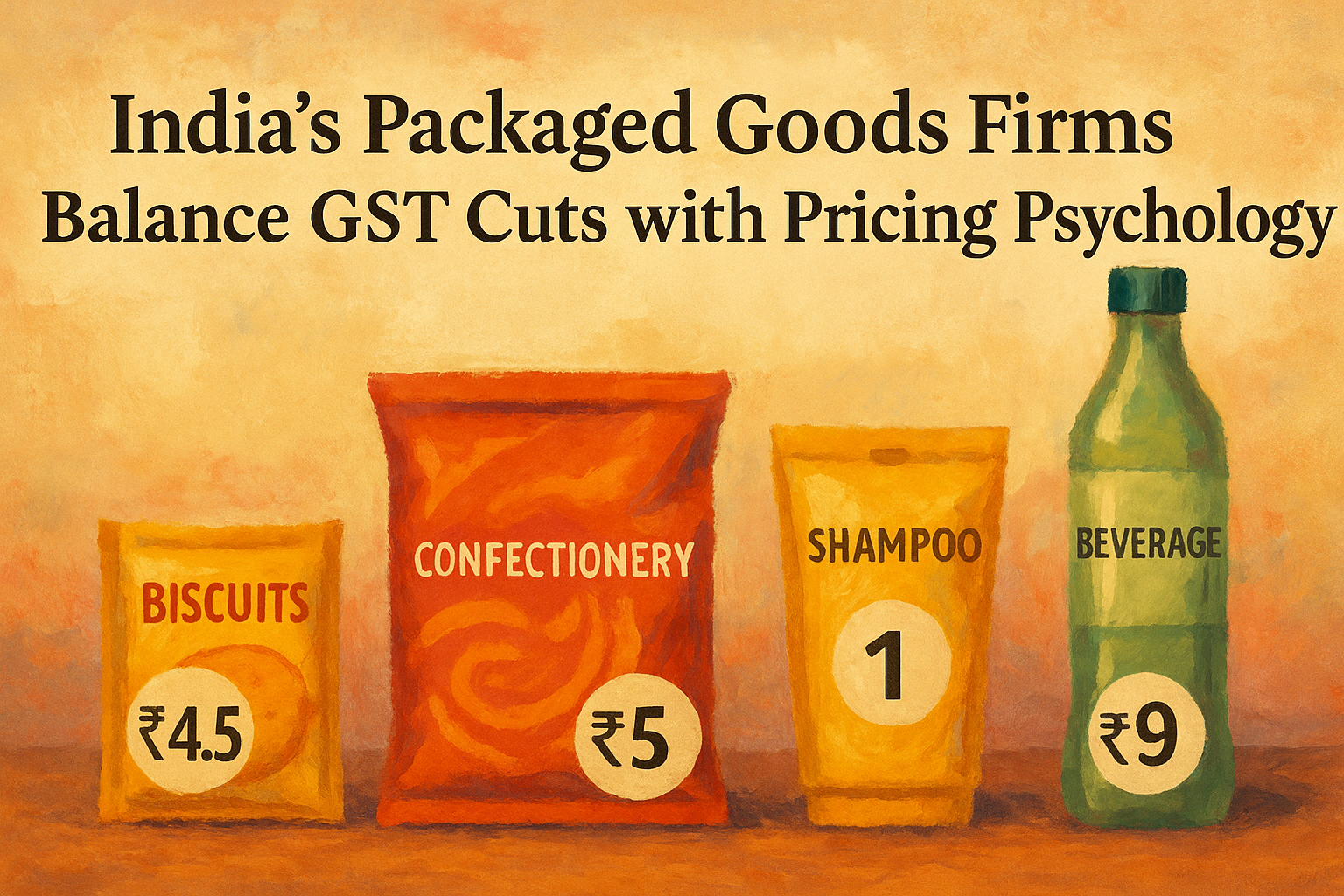India’s fast-moving consumer goods (FMCG) sector is witnessing a delicate tug-of-war between taxation reforms and consumer psychology. With the government’s recent decision to rationalize Goods and Services Tax (GST) rates, packaged goods companies now face a strategic choice: should they lower prices or retain popular price points by offering more volume?
The Price-Point Puzzle
At the center of the debate are “price-point packs”—tiny, affordable units of everyday products sold at ₹1, ₹5, and ₹10. For decades, these rounded denominations have been the psychological anchors for India’s mass-market shoppers, largely because coins are readily available in these values. Retailers, too, prefer simplicity at the counter, often compensating with candies instead of loose change when coins fall short.
Cutting prices even marginally to ₹4.50 or ₹9 risks complicating this simplicity. Yet, some companies are doing just that, betting on digital payments and shifting consumer behavior to soften the blow.
Two Diverging Strategies
- Adding Volume, Holding Price
Hindustan Unilever Ltd (HUL), the country’s largest FMCG player, has chosen to stick with iconic price points. Instead of trimming prices, HUL is increasing the weight or volume of small packs of shampoos and soaps. As its spokesperson explained, the move ensures “pricing simplicity” while delivering value by lowering the effective cost per gram or millilitre.Similarly, Bikaji Foods International Ltd has pledged to retain sub-₹15 price points for its popular snacks. Packs of bhujia, for instance, will now carry more grammage instead of being repriced. However, Bikaji has applied 6–8% cuts on larger packs above ₹20, a feasible move given their flexible packaging sizes.
- Direct Price Reductions
On the other side, companies like Parle, Coca-Cola, and Reliance Consumer are taking the direct price-cut route. Small packs of biscuits, beverages, and confectionery are now priced at ₹4.50 or ₹9. Coca-Cola’s bottler SLMG Beverages recently reduced the 125 ml Maaza tetra pack from ₹10 to ₹9 and the Kinley water bottle from ₹8 to ₹7, also trimming ₹20 packs down to ₹18.These companies are betting that India’s rising comfort with UPI and digital payments will overcome coinage limitations, allowing them to maintain competitiveness while passing on tax benefits visibly.
The GST Backdrop
The change stems from the government’s overhaul of GST slabs effective 22 September. The previous 12% and 28% brackets were restructured into 5% and 18%, with a new 40% slab for luxury and “sin” goods like tobacco and aerated drinks.
For everyday essentials, the reductions are sharp:
- Hair oil, shampoo, toothpaste, soap, toothbrushes, and shaving cream now attract 5% GST instead of 18%.
- Pre-packaged snacks, namkeens, ghee, cheese, and dairy spreads have dropped from 12% to 5%.
The intent is to make essentials more affordable and stimulate consumption. Yet, as companies navigate the terrain, the challenge lies in reconciling lower tax rates with consumers’ deep-rooted expectations around price-point packs.
What This Means for Consumers
For the Indian shopper, the impact will be twofold:
- Value Increase at Familiar Price Points – More product at the same ₹1, ₹5, or ₹10.
- Visible Reductions on Select SKUs – Lower shelf prices on beverages, biscuits, and larger packs, which could encourage volume growth.
Digital payments are further easing pricing flexibility, reducing dependence on physical coinage. Over time, this could normalize odd price tags, though the ₹1–₹10 anchors are unlikely to lose their grip on consumer psychology anytime soon.
The Road Ahead
The GST rationalization has set off a new wave of pricing experiments across FMCG companies. Whether consumers embrace odd price points or cling to round-number comfort zones will determine which strategy wins out. For now, India’s packaged goods players are carefully straddling both worlds—balancing tradition, convenience, and competitiveness in one of the world’s most price-sensitive markets.
Feel free to share your experiences and insights in the comments below. Let’s continue the conversation and grow together as a community of traders and analysts.
By sharing this experience and insights, I hope to contribute to the collective knowledge of our professional community, encouraging a culture of strategic thinking and informed decision-making.
As always, thorough research and risk management are crucial. The dynamic nature of financial markets demands vigilance, agility, and a deep understanding of the tools at your disposal. Here’s to profitable trading and navigating the election season with confidence!
Ready to stay ahead of market trends and make informed investment decisions? Follow our page for more insights and updates on the latest in the financial world!
For a free online stock market training by Yogeshwar Vashishtha (M.Tech IIT) this Saturday from 11 am – 1 pm, please sign up with https://pathfinderstrainings.in/training/freetrainings.aspx
Experience profits with my winning algo strategies – get a free one-month trial with ₹15 lakh capital! – https://terminal.algofinders.com/algo-terminal
Disclaimer
This article should not be interpreted as investment advice. For any investment decisions, consult a reputable financial advisor. The author and publisher are not responsible for any losses incurred by investors or traders based on the information provided.


